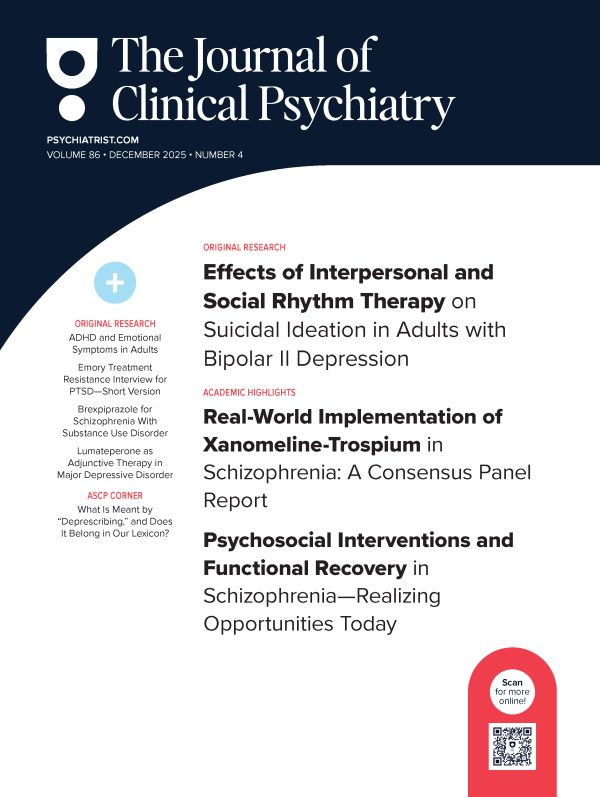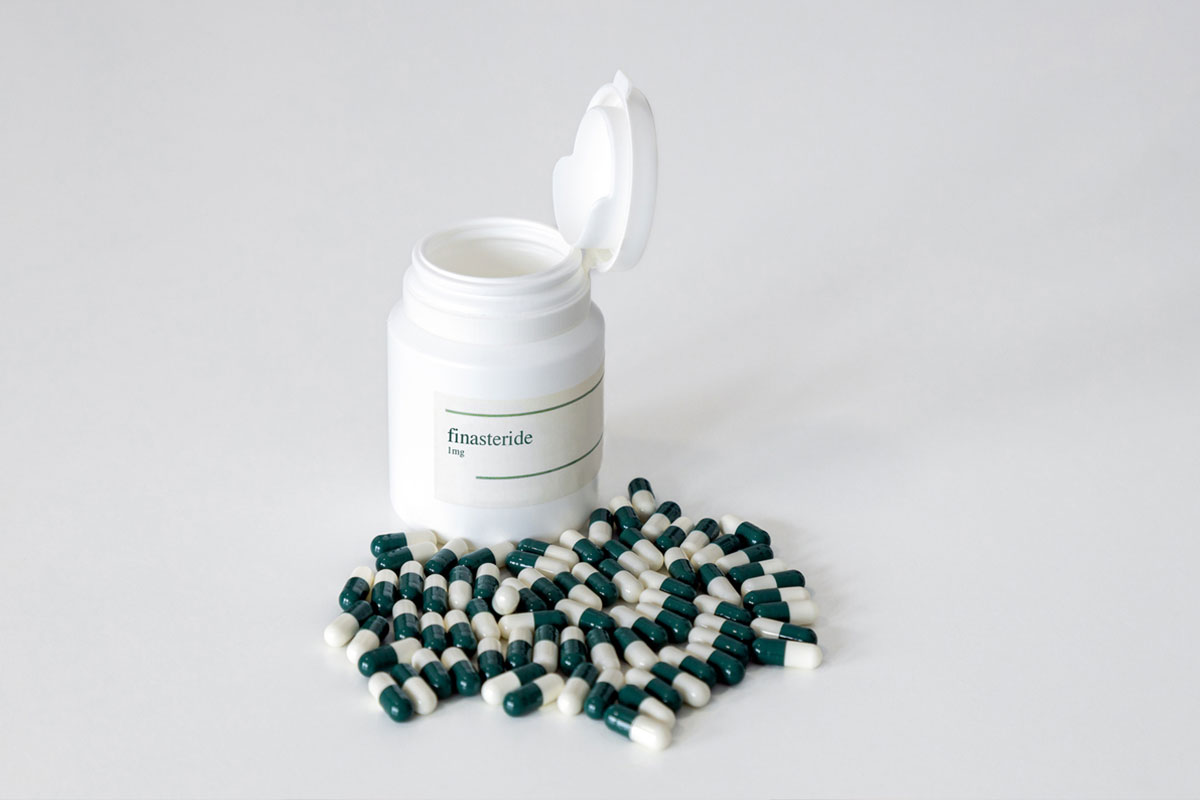Abstract
Background: Ketamine and esketamine have been reported to rapidly alleviate various parameters of suicidality, with antisuicidal effects that may be independent of their rapid-acting antidepressant effects. However, it remains unclear whether ketamine and/or esketamine are associated with the emergence or worsening of suicidality.
Methods: In this global observational pharmacovigilance cohort study, we analyzed suicidality reports associated with ketamine and esketamine using data from the World Health Organization’s VigiBase, accessed from its inception through January 2024. Disproportionality was assessed using the reporting odds ratio (ROR), with significance defined as P < .05.
Results: Compared to lithium, esketamine exhibited higher disproportionality for suicidal ideation (ROR = 5.13, 95% CI, 4.48–5.87, P < .0001), while ketamine showed lower disproportionality for suicidal ideation (ROR = 0.76, 95% CI, 0.58–0.99, P = .043), suicide attempt (ROR =0.17, 95% CI, 0.12–0.24, P < .0001), and completed suicide (ROR =0.30, 95% CI, 0.22–0.40, P < .0001). Esketamine also had lower RORs for suicide attempt (ROR = 0.46, 95% CI, 0.39–0.54, P < .0001) and completed suicide (ROR =0.36, 95% CI, 0.30–0.43, P < .0001). When fluoxetine was used as the reference, esketamine showed higher disproportionality for suicidal ideation (ROR = 3.34, 95% CI, 3.06–3.65, P < .0001), while ketamine had a lower ROR (ROR =0.49, 95% CI, 0.39–0.63, P < .0001). For suicidal behavior, esketamine had a lower ROR (ROR =0.37, 95% CI, 0.17–0.81, P = .012), and both ketamine (ROR =0.15, 95% CI, 0.10–0.21, P < .0001) and esketamine (ROR = 0.39, 95% CI, 0.34–0.45, P < .0001) had lower RORs for suicide attempt. Both agents also had lower RORs for completed suicides (ketamine: ROR = 0.24, 95% CI, 0.18–0.32, P < .0001; esketamine: ROR= 0.29, 95% CI, 0.25–0.35, P < .0001).
Conclusion: Both increased and decreased RORs for suicidality parameters were observed with ketamine and esketamine, with similar results regardless of whether lithium or fluoxetine was used as the reference. However, causality between ketamine/esketamine use and changes in suicidality cannot be determined.
J Clin Psychiatry 2025;86(3):24m15534
Author affiliations are listed at the end of this article.
Members Only Content
This full article is available exclusively to Professional tier members. Subscribe now to unlock the HTML version and gain unlimited access to our entire library plus all PDFs. If you’re already a subscriber, please log in below to continue reading.
References (28)

- McIntyre RS, Rosenblat JD, Nemeroff CB, et al. Synthesizing the evidence for ketamine and esketamine in treatment-resistant depression: an international expert opinion on the available evidence and implementation. Am J Psychiatry. 2021;178(5):383–399. PubMed CrossRef
- McIntyre RS, Alsuwaidan M, Baune BT, et al. Treatment-resistant depression: definition, prevalence, detection, management, and investigational interventions. World Psychiatry. 2023;22(3):394–412. PubMed CrossRef
- Jollant F, Demattei C, Fabbro P, et al. Clinical predictive factors and trajectories of suicidal remission over 6 weeks following intravenous ketamine for suicidal ideation. J Affect Disord. 2024;347:1–7. PubMed CrossRef
- Krystal JH, Kavalali ET, Monteggia LM. Ketamine and rapid antidepressant action: new treatments and novel synaptic signaling mechanisms. Neuropsychopharmacology. 2024;49(1):41–50. PubMed CrossRef
- Xiong J, Lipsitz O, Chen-Li D, et al. The acute antisuicidal effects of single-dose intravenous ketamine and intranasal esketamine in individuals with major depression and bipolar disorders: a systematic review and meta-analysis. J Psychiatr Res. 2021;134:57–68. PubMed CrossRef
- Grunebaum MF, Galfalvy HC, Choo TH, et al. Ketamine for rapid reduction of suicidal thoughts in major depression: a midazolam-controlled randomized clinical trial. Am J Psychiatry. 2018;175(4):327–335. PubMed CrossRef
- Pan Y, Gorenflo MP, Davis PB, et al. Suicidal ideation and suicide attempt following ketamine prescription in patients with treatment-resistant depression: a nation-wide cohort study. Res Sq. 2023:rs.3.rs-3207199. doi:10.21203/rs.3.rs 3207199/v1. PubMed CrossRef
- O’Brien B, Lee J, Kim S, et al. Anti-suicidal effects of IV ketamine in a real-world setting. Psychiatry Res. 2024;331:115604. PubMed
- Bell F. Acute suicidal ideation in the context of esketamine maintenance therapy. Am J Psychiatry. 2023;18(3):15–17. PubMed
- Rayburn WF, Albright BB. Completed suicides and intranasal esketamine therapy: a case report and case series. Psychiatry Res Case Rep. 2023;2(1):100104. PubMed
- Witt K, Potts J, Hubers A, et al. Ketamine for suicidal ideation in adults with psychiatric disorders: a systematic review and meta-analysis of treatment trials. Aust N Z J Psychiatry. 2020;54(1):29–45. PubMed CrossRef
- Wilkinson ST, Ballard ED, Bloch MH, et al. The effect of a single dose of intravenous ketamine on suicidal ideation: a systematic review and individual participant data meta-analysis. Am J Psychiatry. 2018;175(2):150–158. PubMed CrossRef
- Canuso CM, Singh JB, Fedgchin M, et al. Efficacy and safety of intranasal esketamine for the rapid reduction of symptoms of depression and suicidality in patients at imminent risk for suicide: results of a double-blind, randomized, placebo-controlled study. Focus (Am Psychiatr Publ). 2019;17(1):55–65. PubMed CrossRef
- Fu DJ, Ionescu DF, Li X, et al. Esketamine nasal spray for rapid reduction of major depressive disorder symptoms in patients who have active suicidal ideation with intent: double-blind, randomized study (ASPIRE I). J Clin Psychiatry. 2020;81(3):19m13191. PubMed CrossRef
- Chai Y, Luo H, Wei Y, et al. Risk of self-harm or suicide associated with specific drug use disorders, 2004-2016: a population-based cohort study. Addiction. 2022;117(7):1940–1949. PubMed CrossRef
- Uppsala Monitoring Centre. About VigiBase. Accessed March 18, 2025. https://who-umc.org/vigibase/
- Lindquist M. VigiBase, the WHO global ICSR database system: basic facts. Drug Inf J. 2008;42(5):409–419. CrossRef
- MedDRA. Accessed March 18, 2025. https://www.meddra.org/
- Trillenberg P, Sprenger A, Machner B. Sensitivity and specificity in signal detection with the reporting odds ratio and the information component. Pharmacoepidemiol Drug Saf. 2023;32(8):910–917. PubMed CrossRef
- Rothman KJ, Lanes S, Sacks ST. The reporting odds ratio and its advantages over the proportional reporting ratio. Pharmacoepidemiol Drug Saf. 2004;13(8):519–523. PubMed CrossRef
- Szumilas M. Explaining odds ratios. J Can Acad Child Adolesc Psychiatry. 2010;19(3):227–229. PubMed
- McIntyre RS, Mansur RB, Rosenblat JD, et al. The association between glucagon like peptide-1 receptor agonists (GLP-1 RAs) and suicidality: reports to the Food and Drug Administration Adverse Event Reporting System (FAERS). Expert Opin Drug Saf. 2024;23(1):47–55. PubMed CrossRef
- Pompili M. On mental pain and suicide risk in modern psychiatry. Ann Gen Psychiatry. 2024;23(1):6. PubMed CrossRef
- McIntyre RS, Rosenblat JD, Rodrigues NB, et al. The effect of intravenous ketamine on cognitive functions in adults with treatment-resistant major depressive or bipolar disorders: results from the Canadian Rapid Treatment Center of Excellence (CRTCE). Psychiatry Res. 2021;302:113993. PubMed CrossRef
- Gill H, Gill B, Rodrigues NB, et al. The effects of ketamine on cognition in treatment-resistant depression: a systematic review and priority avenues for future research. Neurosci Biobehav Rev. 2021;120:78–85. PubMed CrossRef
- Lee Y, Syeda K, Maruschak NA, et al. A new perspective on the anti-suicide effects with ketamine treatment: a procognitive effect. J Clin Psychopharmacol. 2016;36(1):50–56. PubMed CrossRef
- Gillissie ES, Le GH, Rhee TG, et al. Evaluating Anhedonia as a risk factor in suicidality: a meta-analysis. J Psychiatr Res. 2023;158:209–215. PubMed CrossRef
- McIntyre RS, Berk M, Brietzke E, et al. Bipolar disorders. Lancet. 2020;396(10265):1841–1856. PubMed CrossRef






